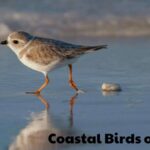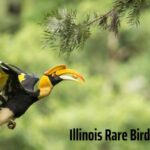Conserve
The Birds of Northern Michigan: A Celebration of Avian Diversity
The birds of Northern Michigan are a vital part of the region’s rich biodiversity, reflecting the diverse ecosystems that thrive in this area. From lush forests to pristine lakes, these avian species exhibit unique adaptations that enable them to survive and flourish in their environments.
Exploring their habitats, behaviors, and challenges reveals the intricate connections within Michigan’s natural landscape. Let’s explore the details with Bird04!
General Characteristics of Northern Michigan’s Environment
Diverse Ecosystems
Northern Michigan is characterized by a rich variety of ecosystems, including:
- Coniferous Forests: These forests, dominated by pine and spruce trees, provide habitat for various wildlife and are crucial for maintaining biodiversity.
- Mixed Forests: A blend of deciduous and coniferous trees, these areas support diverse plant and animal species.
- Lakes and Rivers: The region is dotted with numerous lakes and rivers, which are vital for aquatic life and provide recreational opportunities.
- Wetlands: Marshes and swamps serve as important ecosystems that filter water, store floodwaters, and provide habitats for many species.
Abundant Food Sources
The region offers a rich supply of food, including:
- Insects: A key food source for many birds and other wildlife, insects thrive in the diverse habitats of Northern Michigan.
- Nuts and Berries: Trees and shrubs produce acorns, hickory nuts, and various berries, which provide nourishment for wildlife, especially during the fall.
- Fish: Lakes and rivers are home to numerous fish species, supporting both wildlife and local fishing communities.
Influencing Factors
Several factors impact the Northern Michigan environment:
- Seasons: The distinct four seasons influence wildlife behavior, plant growth, and food availability, creating dynamic ecological patterns.
- Temperature: Seasonal temperature variations affect the growth cycles of plants and the migration patterns of animals.
- Precipitation: Rainfall and snowfall are crucial for maintaining water levels in lakes and rivers, influencing both aquatic and terrestrial ecosystems.
These elements combine to create a vibrant and diverse environment in Northern Michigan, supporting a wide range of flora and fauna while contributing to the region’s ecological health.

Birds of Northern Michigan
Northern Michigan’s diverse habitats provide a rich environment for various bird species, from lush forests to expansive wetlands. This region is home to an array of avian life, showcasing unique adaptations that allow them to thrive in their respective ecosystems. Here, we explore some of the most representative bird species of Northern Michigan.
Forest Birds
- Woodpeckers:
- Species: Several species can be found in Northern Michigan, including the Downy Woodpecker, Hairy Woodpecker, and the larger Pileated Woodpecker.
- Identification: Woodpeckers are characterized by their strong, chisel-like beaks and distinctive plumage, often featuring black, white, and red colors. The Pileated Woodpecker, for example, is easily recognizable by its large size and striking red crest.
- Calls: They produce a variety of sounds, including a distinctive drumming on tree trunks, which serves both as a method of communication and a way to establish territory. Their calls can vary greatly between species, with some being loud and others more subtle.
- Sparrows:
- Species: Common sparrows in this region include the Song Sparrow, White-throated Sparrow, and the Chipping Sparrow.
- Habitat: Sparrows thrive in a range of environments, from dense thickets to open fields, and are often found in mixed habitats that provide ample cover and food sources.
- Diet: These birds primarily feed on seeds, berries, and insects, using their agile foraging skills to find food. Their adaptability to different environments allows them to take advantage of seasonal food availability.
- Owls:
- Species: Notable species include the Great Horned Owl, Barred Owl, and Eastern Screech Owl.
- Hunting Behavior: These nocturnal predators are equipped with excellent night vision and acute hearing, allowing them to hunt small mammals, birds, and even insects in the dark. Great Horned Owls are known for their distinctive tufts and deep hooting calls, while Barred Owls are famous for their “who cooks for you” call, often echoing through the forest at night.
Water Birds
- Ducks:
- Species: Various duck species inhabit Northern Michigan, including the Mallard, Wood Duck, and Northern Pintail.
- Migration: Many ducks migrate south for the winter, often forming large flocks during their journey. Their migration patterns are influenced by the availability of open water and suitable feeding grounds.
- Nesting: Ducks typically build their nests near lakes, rivers, and wetlands, using grasses and reeds for cover. Wood Ducks, for instance, prefer nesting in tree cavities near water.
- Geese:
- Species: The Canada Goose is the most common species in the area, known for its striking black head and white chin strap.
- Migration Patterns: Canada Geese are highly social birds that migrate in large formations, often traveling in V-shapes to conserve energy during long flights. They are known for their honking calls, which can be heard during migration.
- Breeding: They typically nest in grassy areas near water, and their protective nature ensures the safety of their goslings during the vulnerable early stages of life.
- Kingfishers:
- Species: The Belted Kingfisher is a prominent resident of Northern Michigan’s waterways.
- Hunting Technique: Known for their striking blue and white plumage, kingfishers are skilled hunters. They perch on overhanging branches or rocks, scanning the water for fish, which they catch by diving headfirst. Their sharp vision and agile flying skills make them effective hunters in aquatic environments.
Raptors
- Hawks:
- Species: The Red-tailed Hawk and Cooper’s Hawk are among the most common raptors in Northern Michigan.
- Hunting Skills: Hawks exhibit exceptional eyesight and aerial agility, allowing them to spot prey from great heights. Red-tailed Hawks are known for their distinctive reddish-brown tail and powerful hunting technique, often swooping down to capture small mammals. Cooper’s Hawks, on the other hand, are agile fliers that excel in hunting birds, often navigating through dense vegetation.
- Owls:
- Species: The Eastern Screech Owl and Great Horned Owl are notable for their nocturnal habits.
- Night Vision: Owls have large, forward-facing eyes that provide excellent night vision, enabling them to hunt effectively in low-light conditions. Their silent flight allows them to approach prey unnoticed, making them highly effective predators. The Eastern Screech Owl, with its small size and unique trilling calls, is often found in wooded areas and urban parks.
These diverse bird species illustrate the rich avian life in Northern Michigan, each playing an essential role in their respective ecosystems. By understanding and appreciating these birds, we can better appreciate the ecological significance of this beautiful region.
Adaptations of Birds to the Northern Michigan Environment
Feathers
- Thick Feathers: Many bird species in Northern Michigan have developed thick feathers to keep warm during the cold winters. These insulating feathers trap air and provide essential warmth, allowing birds to survive in harsh temperatures.
- Camouflaged Colors: The plumage of various birds often features colors and patterns that help them blend into their surroundings. For instance, the muted browns and greens of woodpeckers and sparrows provide excellent camouflage against tree bark and foliage, making it harder for predators to spot them.
Beaks
- Long, Sharp Beaks: Insectivorous birds, such as kingfishers and some woodpeckers, have evolved long and pointed beaks that allow them to efficiently catch insects. These beaks are adapted for probing into tree bark or diving into water to capture their prey.
- Short, Strong Beaks: Birds like sparrows and chickadees have short and stout beaks designed for cracking seeds and nuts. This adaptation enables them to access nutritious food sources that are plentiful in the region, especially during the fall and winter months.
Feet
- Clawed Feet: Many forest birds, such as hawks and woodpeckers, possess sharp claws that help them grasp tree branches and cling to vertical surfaces. This adaptation is crucial for their hunting and foraging activities, allowing them to perch securely while scanning for prey.
- Webbed Feet: Waterfowl like ducks have webbed feet, which are essential for swimming. This adaptation enables them to navigate efficiently through lakes and rivers, allowing them to forage for food and evade predators.
Behavior
- Migration: Many bird species in Northern Michigan migrate seasonally to take advantage of warmer climates and abundant food sources. For instance, ducks and geese migrate south during winter, while others return in spring to breed and feed on the plentiful resources available.
- Food Storage: Some species, such as chickadees, exhibit behavior that involves storing food for later use. They cache seeds and insects in various locations to ensure they have enough sustenance during the harsh winter months when food is scarce.
- Nesting: Birds in this region have developed specific nesting behaviors that reflect their environments. For example, woodpeckers create cavities in trees for their nests, providing shelter and protection for their young, while ducks often nest in dense grasses near water sources to safeguard their eggs from predators.
These adaptations highlight the incredible resilience and versatility of birds in Northern Michigan, enabling them to thrive in a diverse range of habitats and cope with the challenges of seasonal changes and environmental conditions.
Conclusion
In conclusion, the diverse ecosystems of Northern Michigan provide a unique habitat for a variety of bird species, each showcasing remarkable adaptations for survival. From the thick feathers that insulate against the cold to the specialized beaks for foraging, these adaptations are essential for their thriving populations.
Understanding the birds of Northern Michigan enriches our appreciation for this vibrant region and underscores the importance of conservation efforts.





